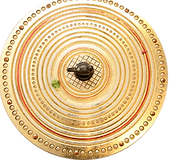
Eternal Gandhi
DISMANTLE ALL BOUNDARIES
National Gallery of Modern Art, Mumbai, 2006

Eternal Gandhi
National Gallery of Modern Art, Mumbai, 2006
Eternal Gandhi
DISMANTLE ALL BOUNDARIES

Winner
ID Magazine Design Award,
New York
2002
Eternal Gandhi

Winner
ID Magazine Design Award,
New York
2002

.png)

_edited%20(weco.png)


Creative Spirituality, Technology, Culture & Design



.png)
.png)



.png)


.png)
The World of
RANJIT MAKKUNI









.jpg)

.jpg)
Gandhian
Thought, Technology &
Product Design
Review, NDTV.
Opening of the Gandhi museum, New Delhi.

Lessons learnt from the Eternal Gandhi Museum?
Village development and design of sustainable villages, as a basis of a fair zero-Karma economy.
Relook design focused on village creativity? Relook the benefits of hand based production?


.jpg)
Mahatma Gandhi tells us: “The village is the microcosm of India”.
The Eternal Gandhi museum allowed show new product design inspired by village aesthetics and hand skills.
With proper design, the village has the potential to transform itself, design its sanitation, display its concern for the environment and become a source of design innovation.
Gandhi visualized an economically sustainable India visualized as a network of self sufficient villages, which contributed to the larger development of the nation, and this vision has been was formulated in his theory of concentric circles of Development: “My idea of village swaraj is that it is a complete republic, independent of its neighbors for its own vital wants, and yet interdependent for many others in which dependence is a necessity.”
The individual is at the center and the village, and the group of villages encircle others in concentric circles; In this flat and anti pyramid structure, composed of innumerable villages, there will be an ever-widening oceanic circles, establishing an idealized non-violent economic order.
‘An ideal Indian village will be so constructed as to lend itself to perfect sanitation. It will have cottages with sufficient light and ventilation built of material obtainable within a radius of five miles of it.
The village lanes and streets will be free of all avoidable dust. It will have wells according to its needs and accessible to all. It will have .... common meeting place, a village common for grazing its cattle, a cooperative dairy, primary and secondary schools in which industrial education will be the central fact, and it will have panchayats for settling disputes. It will produce its own grains, vegetables and fruit, and its own khadi...’ (Harijan, 9 January1937).
Concentric circles of Development revisited?
Is it time to revisit and re-realize sustainable communities, especially the trickle back of some of urban based innovation, product design, computing and "prosperity" back to the villages.... Can we reciprocally enlist village creativity as an input in the design urban, creative products?
Hand based skills, livelihood.
Poetics of Charkha.
E-Charkha installation.
.jpg)
Can we try to re-imagine the message of the Charkha for today?

The good news about the crafts and design forms of village centric livelihood, eg., farming and crafts, is that the hand is deep part of a villager's livelihood. The hand is not just an instrument following a unidirectional command from the the brain; but actually bidirectional: engagement with the hands offers the benefits of well being: engaging with the hand creates neurochemical changes in the mind that release 'happiness' hormones.
Therefore, hand made art, hand made livelihood that promote the 'heart' and mind connection helps us, designers, to focus on the relationship between design, neuroplasticity and well being.
Village Computing


The hand and mind, (hand and 'heart') are in a symbiotic relationship. Hand based gestures, hand skills forges new neural connections, and as such are used as a treatment in stroke patients.
So instead of mechanically sitting in front of a screen, here is what we can learn from village design: How can urban digital dwellers engage their hands so that both 'work' and 'healing' can co-occur simultaneously.


Going a step further, as designers we ask:
how can we pay back the village? Is it possible to incorporate the 'village' in the manufacturing of modern product designs, eg., computing casing, or learn from techniques of recycling, and learning to make products from natural materials?


PRESS
CNN.
 Slide30 |
|---|
 Slide29 |
 Slide28 |
 Slide27 |
 Slide25 |
 Slide26 |
 Slide24 |
 Slide23 |
 Slide22 |
 Slide21 |
 Slide19 |
 Slide20 |
 Slide18 |
 Slide17 |
 Slide16 |
 Slide15 |
 Slide14 |
 Slide13 |
 Slide12 |
 Slide11 |
 Slide10 |
 Slide8 |
 Slide7 |
 Slide6 |
 Slide4 |
 Slide3 |
 Slide5 |
 Slide2 |
(c) 2002- present, Ranjit Makkuni, Sacred World Research/Design Lab.



